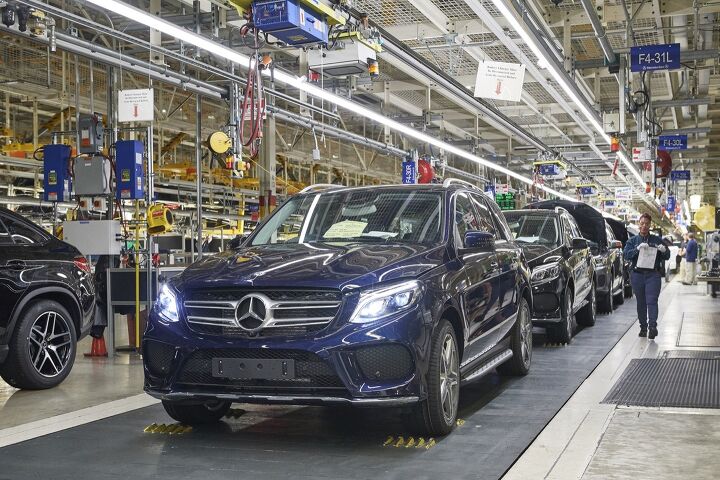Steel, Aluminum Tariffs Might Not Happen, Trump Says

As the U.S., Mexico, and Canada enter into the final day of the seventh round of NAFTA renegotiation talks, President Trump is offering his neighbors an incentive for signing a favorable deal.
“Tariffs on Steel and Aluminum will only come off if new & fair NAFTA agreement is signed,” Trump tweeted on Monday morning.
The president’s surprise announcement of tariffs on imported aluminum and steel late last week — 10 percent on the lighter metal, 25 percent on the heavier one — sent automaker stocks tumbling. Hoping to quell fears of new vehicle price increases, General Motors and Toyota released statements claiming the bulk of their aluminum and steel flies a red, white, and blue flag.
Quick out of the gate, the American International Automobile Dealers Association stated, “Both metals are crucial to the production of cars and trucks sold in America today and would raise the sale prices of those vehicles substantially.”
While the proposed tariffs would be a boon for domestic producers of steel and aluminum, the potential for inflated window stickers comes as auto sales cool off in the United States. Trump later applied the tariff threat to imported European vehicles (in the event the European Union retaliates).
Speaking on CNBC Friday, U.S. Commerce Secretary Wilbur Ross predicted a “trivial” price impact on vehicles, given that steel goes for $700 a ton. Ross’s desire for tariffs apparently won out over the president’s chief economic advisor, Gary Cohn, who opposed the creation of tariffs.
According to Ducker Worldwide-FSG, the average U.S. vehicle is 11 percent aluminum and 54 percent steel. Factoring in metal waste during the production of parts, the research firm estimates an average vehicle (weighing 3,835 pounds) uses 526 pounds of aluminum and 2,925 pounds of steel. Analysts suggest a tariff could add $200 to $300 to the price of a new vehicle.
So far, Ford, Honda, and Toyota have issued statements warning of negative tariff consequences.

More by Steph Willems
Latest Car Reviews
Read moreLatest Product Reviews
Read moreRecent Comments
- Probert They already have hybrids, but these won't ever be them as they are built on the modular E-GMP skateboard.
- Justin You guys still looking for that sportbak? I just saw one on the Facebook marketplace in Arizona
- 28-Cars-Later I cannot remember what happens now, but there are whiteblocks in this period which develop a "tick" like sound which indicates they are toast (maybe head gasket?). Ten or so years ago I looked at an '03 or '04 S60 (I forget why) and I brought my Volvo indy along to tell me if it was worth my time - it ticked and that's when I learned this. This XC90 is probably worth about $300 as it sits, not kidding, and it will cost you conservatively $2500 for an engine swap (all the ones I see on car-part.com have north of 130K miles starting at $1,100 and that's not including freight to a shop, shop labor, other internals to do such as timing belt while engine out etc).
- 28-Cars-Later Ford reported it lost $132,000 for each of its 10,000 electric vehicles sold in the first quarter of 2024, according to CNN. The sales were down 20 percent from the first quarter of 2023 and would “drag down earnings for the company overall.”The losses include “hundreds of millions being spent on research and development of the next generation of EVs for Ford. Those investments are years away from paying off.” [if they ever are recouped] Ford is the only major carmaker breaking out EV numbers by themselves. But other marques likely suffer similar losses. https://www.zerohedge.com/political/fords-120000-loss-vehicle-shows-california-ev-goals-are-impossible Given these facts, how did Tesla ever produce anything in volume let alone profit?
- AZFelix Let's forego all of this dilly-dallying with autonomous cars and cut right to the chase and the only real solution.


































Comments
Join the conversation
YAWN. Another day, another political click bait article from an automotive website. Hey everyone, did you know Black Panther is the BEST FILM OF ALL TIME???!!!!
This is why countries and their leaders are getting sick of Trump. Have read. http://www.abc.net.au/news/2018-03-05/trump-said-australia-would-be-exempt-from-tariffs/9512612